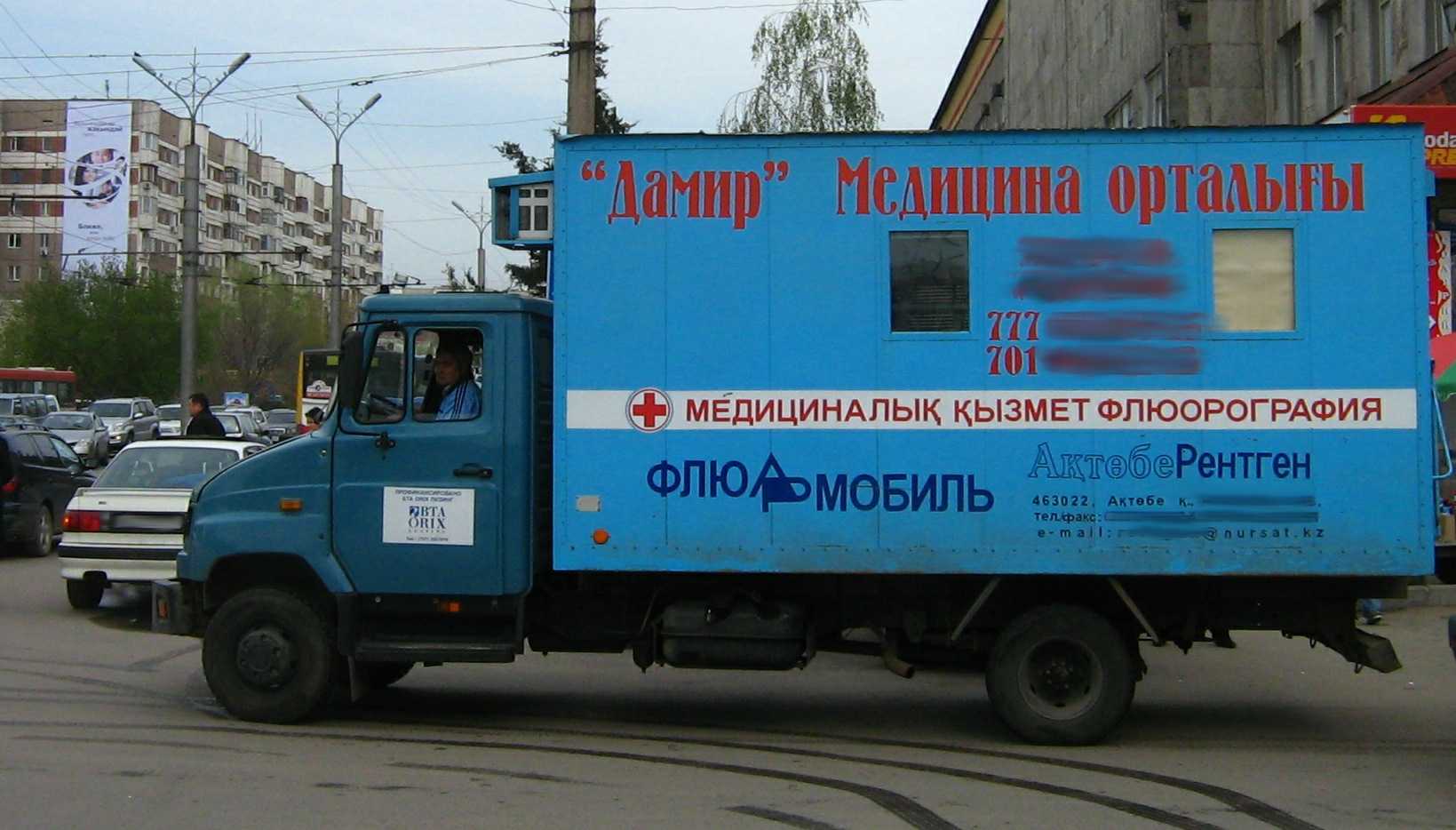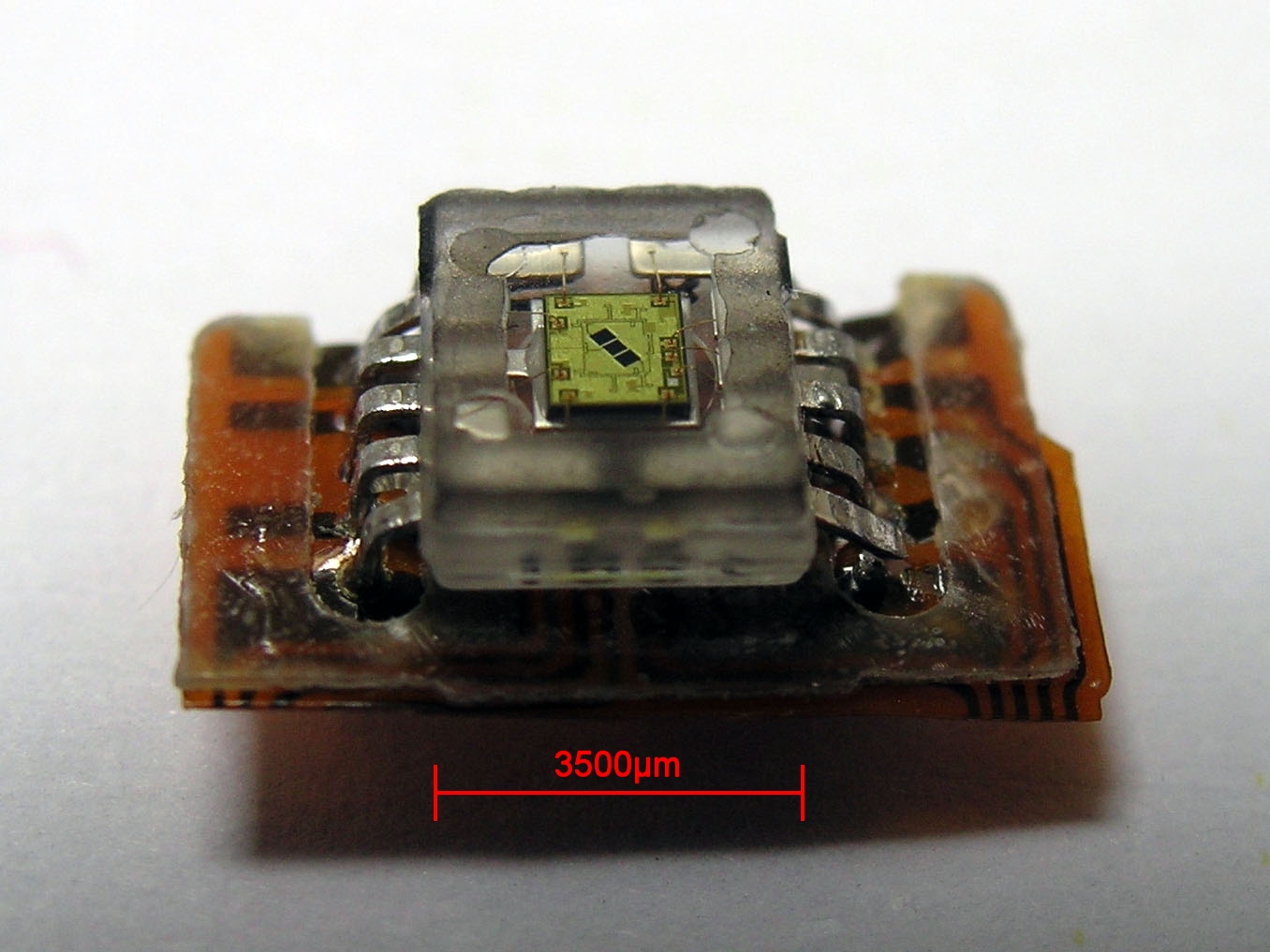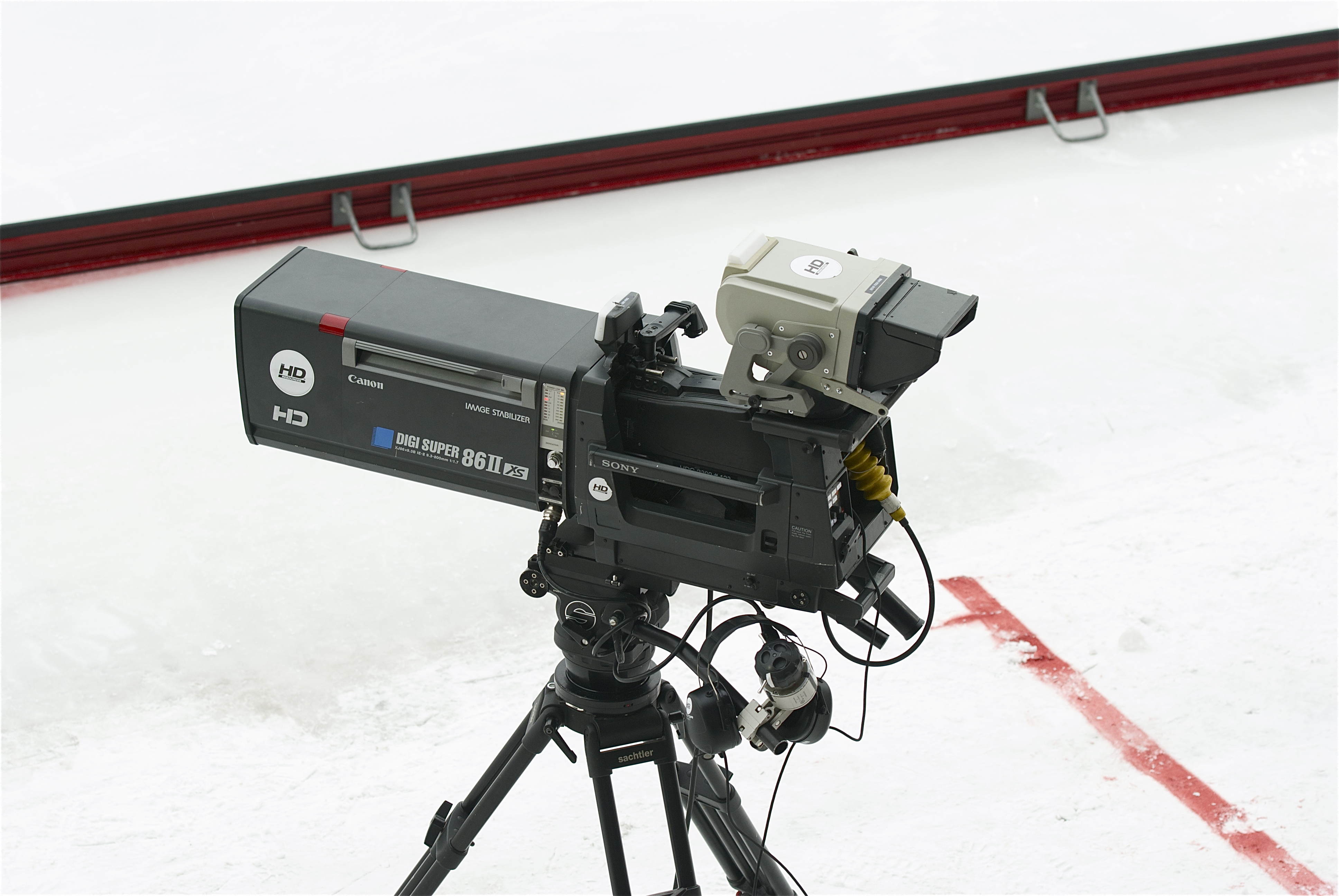|
Photofluorography
Photofluorography (sometimes called just fluorography) is photography of X-ray images from a fluorescent screen. It is commonly used in some countries for chest X-ray screening, e.g. to diagnose tuberculosis (see Abreugraphy for more information on such usage of this technique). Method of image formation in photofluorography X-ray beams from the tube get attenuated by the patient producing a transmitted radiation intensity corresponding to the part of the body traversed by the X-ray beam. Transmitted intensities now fall on the photocathode stimulating it to produce electrons in quantities external to the light intensities emitted by the input. This is caused by the formation of a light image of the transmitted radiation pattern. Electrons from the photocathode are accelerated and focused electronically out on the output phosphor which emits light as a result of electron bombardment. This shows a magnified image of what appears on the input phosphor. The semitransparent mirror ... [...More Info...] [...Related Items...] OR: [Wikipedia] [Google] [Baidu] |
Chest Photofluorography
Chest photofluorography, or abreugraphy (better known as mass miniature radiography in the UK and miniature chest radiograph in the US), is a photofluorography technique for mass screening for tuberculosis using a miniature (50 to 100 mm) photograph of the screen of an X-ray fluoroscopy of the thorax, first developed in 1936. History Abreugraphy receives its name from its inventor, Dr. Manuel Dias de Abreu, a Brazilian physician and pulmonologist. It has received several different names, according to the country where it was adopted: mass radiography, miniature chest radiograph (United Kingdom and United States), roentgenfluorography (Germany), radiophotography (France), schermografia (Italy), radioscopy (Spain) and photofluorography (Sweden). In many countries, miniature mass radiographs (MMR) was quickly adopted and extensively utilized in the 1950s. For example, in Brazil and in Japan, tuberculosis prevention laws went into effect, obligating ca. 60% of the population ... [...More Info...] [...Related Items...] OR: [Wikipedia] [Google] [Baidu] |
Electron Bombardment
Electron ionization (EI, formerly known as electron impact ionization and electron bombardment ionization) is an ionization method in which energetic electrons interact with solid or gas phase atoms or molecules to produce ions. EI was one of the first ionization techniques developed for mass spectrometry. However, this method is still a popular ionization technique. This technique is considered a hard (high fragmentation) ionization method, since it uses highly energetic electrons to produce ions. This leads to extensive fragmentation, which can be helpful for structure determination of unknown compounds. EI is the most useful for organic compounds which have a molecular weight below 600 amu. Also, several other thermally stable and volatile compounds in solid, liquid and gas states can be detected with the use of this technique when coupled with various separation methods. History Electron ionization was first described in 1918 by Canadian-American Physicist Arthur J. Dem ... [...More Info...] [...Related Items...] OR: [Wikipedia] [Google] [Baidu] |
Kinescope
Kinescope , shortened to kine , also known as telerecording in Britain, is a recording of a television program on motion picture film directly through a lens focused on the screen of a video monitor. The process was pioneered during the 1940s for the preservation, re-broadcasting, and sale of television programs before the introduction of quadruplex videotape, which from 1956 eventually superseded the use of kinescopes for all of these purposes. Kinescopes were the only practical way to preserve live television broadcasts prior to videotape. Typically, the term can refer to the process itself, the equipment used for the procedure (a movie camera mounted in front of a video monitor, and synchronized to the monitor's scanning rate), or a film made using the process. Film recorders are similar, but record source material from a computer system instead of a television broadcast. A telecine is the inverse device, used to show film directly on television. The term originally refer ... [...More Info...] [...Related Items...] OR: [Wikipedia] [Google] [Baidu] |
Videotape Recorder
A video tape recorder (VTR) is a tape recorder designed to record and playback video and audio material from magnetic tape. The early VTRs were open-reel devices that record on individual reels of 2-inch-wide (5.08 cm) tape. They were used in television studios, serving as a replacement for motion picture film stock and making recording for television applications cheaper and quicker. Beginning in 1963, videotape machines made instant replay during televised sporting events possible. Improved formats, in which the tape was contained inside a videocassette, were introduced around 1969; the machines which play them are called videocassette recorders. An agreement by Japanese manufacturers on a common standard recording format, which allowed cassettes recorded on one manufacturer's machine to play on another's, made a consumer market possible; and the first consumer videocassette recorder, which used the U-matic format, was introduced by Sony in 1971. History In early ... [...More Info...] [...Related Items...] OR: [Wikipedia] [Google] [Baidu] |
Photodetector
Photodetectors, also called photosensors, are devices that detect light or other forms of electromagnetic radiation and convert it into an electrical signal. They are essential in a wide range of applications, from digital imaging and optical communication to scientific research and industrial automation. Photodetectors can be classified by their mechanism of detection, such as the photoelectric effect, photochemical reactions, or thermal effects, or by performance metrics like spectral response. Common types include photodiodes, phototransistors, and photomultiplier tubes, each suited to specific uses. Solar cells, which convert light into electricity, are also a type of photodetector. This article explores the principles behind photodetectors, their various types, applications, and recent advancements in the field. History The development of photodetectors began with the discovery of the photoelectric effect by Heinrich Hertz in 1887, later explained by Albert Einst ... [...More Info...] [...Related Items...] OR: [Wikipedia] [Google] [Baidu] |
TV Camera
A professional video camera (often called a television camera even though its use has spread beyond television) is a high-end device for creating electronic moving images (as opposed to a movie camera, that earlier recorded the images on filmstock, film). Originally developed for use in television studios or with Outside broadcasting, outside broadcast Production truck, trucks, they are now also used for music videos, direct-to-video movies (see digital movie camera), corporate and educational videos, wedding videos, among other uses. Since the 2000s, most professional video cameras are digital (instead of analog). The distinction between professional video cameras and movie cameras narrowed as HD digital video cameras with sensors the same size as 35mm movie cameras - plus Dynamic range#Photography, dynamic range (exposure latitude) and color rendition approaching film quality - were introduced in the late 2010s. Nowadays, HDTV cameras designed for broadcast television, news, sp ... [...More Info...] [...Related Items...] OR: [Wikipedia] [Google] [Baidu] |
Focal Length
The focal length of an Optics, optical system is a measure of how strongly the system converges or diverges light; it is the Multiplicative inverse, inverse of the system's optical power. A positive focal length indicates that a system Convergence (optics), converges light, while a negative focal length indicates that the system Divergence (optics), diverges light. A system with a shorter focal length bends the Ray (optics), rays more sharply, bringing them to a focus in a shorter distance or diverging them more quickly. For the special case of a thin lens in air, a positive focal length is the distance over which initially Collimated beam, collimated (parallel) rays are brought to a Focus (optics), focus, or alternatively a negative focal length indicates how far in front of the lens a point source must be located to form a collimated beam. For more general optical systems, the focal length has no intuitive meaning; it is simply the inverse of the system's optical power. In mos ... [...More Info...] [...Related Items...] OR: [Wikipedia] [Google] [Baidu] |
Photographic Film
Photographic film is a strip or sheet of transparent film base coated on one side with a gelatin photographic emulsion, emulsion containing microscopically small light-sensitive silver halide crystals. The sizes and other characteristics of the crystals determine the sensitivity, contrast, and image resolution, resolution of the film. Film is typically segmented in ''frames'', that give rise to separate photographs. The emulsion will gradually darken if left exposed to light, but the process is too slow and incomplete to be of any practical use. Instead, a very short exposure (photography), exposure to the image formed by a camera lens is used to produce only a very slight chemical change, proportional to the amount of light absorbed by each crystal. This creates an invisible latent image in the emulsion, which can be chemically photographic processing, developed into a visible photograph. In addition to visible light, all films are sensitive to ultraviolet light, X-rays, gamma ... [...More Info...] [...Related Items...] OR: [Wikipedia] [Google] [Baidu] |
Camera Lens
A camera lens, photographic lens or photographic objective is an optical lens (optics), lens or assembly of lenses (compound lens) used in conjunction with a camera body and mechanism to Imaging, make images of objects either on photographic film or on other media capable of storing an image Photosensitivity, chemically or Image sensor, electronically. There is no major difference in principle between a lens used for a still camera, a video camera, a telescope, a microscope, or other apparatus, but the details of design and construction are different. A lens might be permanently fixed to a camera, or it might be interchangeable lens camera, interchangeable with lenses of different focal lengths, apertures, and other properties. While in principle a simple lens, simple convex lens will suffice, in practice a compound lens made up of a number of optical lens elements is required to correct (as much as possible) the many optical aberrations that arise. Some aberrations will be prese ... [...More Info...] [...Related Items...] OR: [Wikipedia] [Google] [Baidu] |
Radiology
Radiology ( ) is the medical specialty that uses medical imaging to diagnose diseases and guide treatment within the bodies of humans and other animals. It began with radiography (which is why its name has a root referring to radiation), but today it includes all imaging modalities. This includes technologies that use no ionizing electromagnetic radiation, such as medical ultrasound, ultrasonography and magnetic resonance imaging (MRI), as well as others that do use radiation, such as x-ray computed tomography, computed tomography (CT), fluoroscopy, and nuclear medicine including positron emission tomography (PET). Interventional radiology is the performance of usually invasiveness of surgical procedures, minimally invasive medical procedures with the guidance of imaging technologies such as those mentioned above. The modern practice of radiology involves a team of several different healthcare professionals. A radiologist, who is a medical doctor with specialized post-graduate tr ... [...More Info...] [...Related Items...] OR: [Wikipedia] [Google] [Baidu] |
Phosphor
A phosphor is a substance that exhibits the phenomenon of luminescence; it emits light when exposed to some type of radiant energy. The term is used both for fluorescent or phosphorescent substances which glow on exposure to ultraviolet or visible light, and cathodoluminescent substances which glow when struck by an electron beam ( cathode rays) in a cathode-ray tube. When a phosphor is exposed to radiation, the orbital electrons in its molecules are excited to a higher energy level; when they return to their former level they emit the energy as light of a certain color. Phosphors can be classified into two categories: fluorescent substances which emit the energy immediately and stop glowing when the exciting radiation is turned off, and phosphorescent substances which emit the energy after a delay, so they keep glowing after the radiation is turned off, decaying in brightness over a period of milliseconds to days. Fluorescent materials are used in applications in wh ... [...More Info...] [...Related Items...] OR: [Wikipedia] [Google] [Baidu] |






